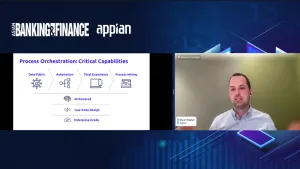Thought Leadership Centre
Resource Center
Event News
CIMB Niaga leads the way in captivating Indonesia’s youth
The bank’s digital solutions are winning over younger generations with 3.
Partner Sites
Join the community

 Advertise
Advertise














Commentary
Asian banks urged to build AML compliance programs
Asian banks urged to build AML compliance programs
3 phases of the green banking policy
Mobile banking & financial inclusion in India
The synergy between trade finance and trade credit insurance
3 most in demand skill in Asian banking and finance
The real deal on AsiaPac banks and liquidity
The role of banks in project financing in India
Making risk everyone’s business
Here's why the best mobile solutions are yet to come
What you need to know about the user experience in internet banking
What to expect of the banking sector by 2020
Ten ways to crack the job market in Hong Kong and Singapore
How to increase infrastructure financing in India
Mobile banking becomes a top priority in 2012
10 things governments should do to ensure banking and financial stability
Here's how banks can select the right systems integrator in Asia
Regulatory compliance optimisation for banks